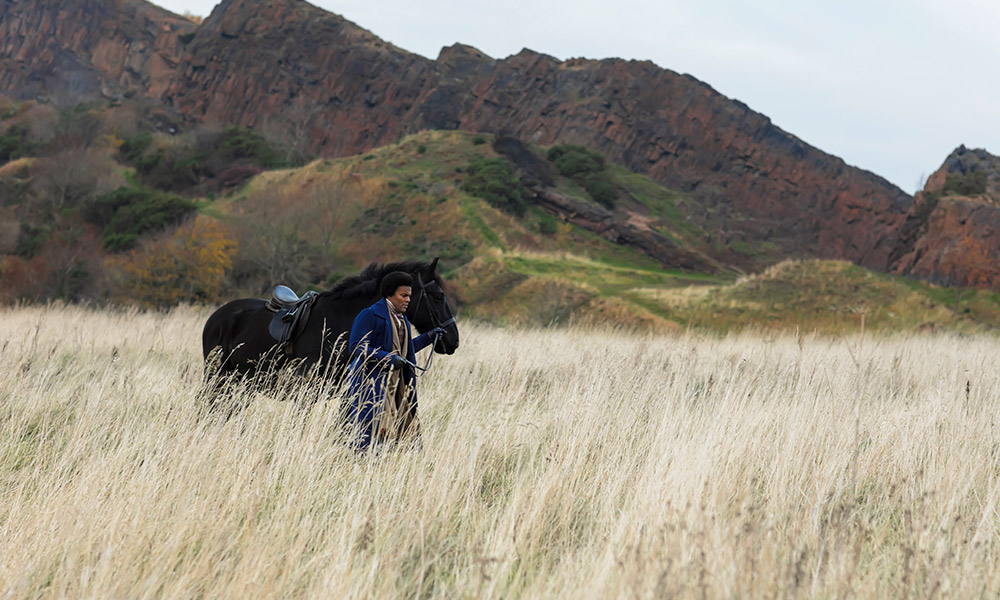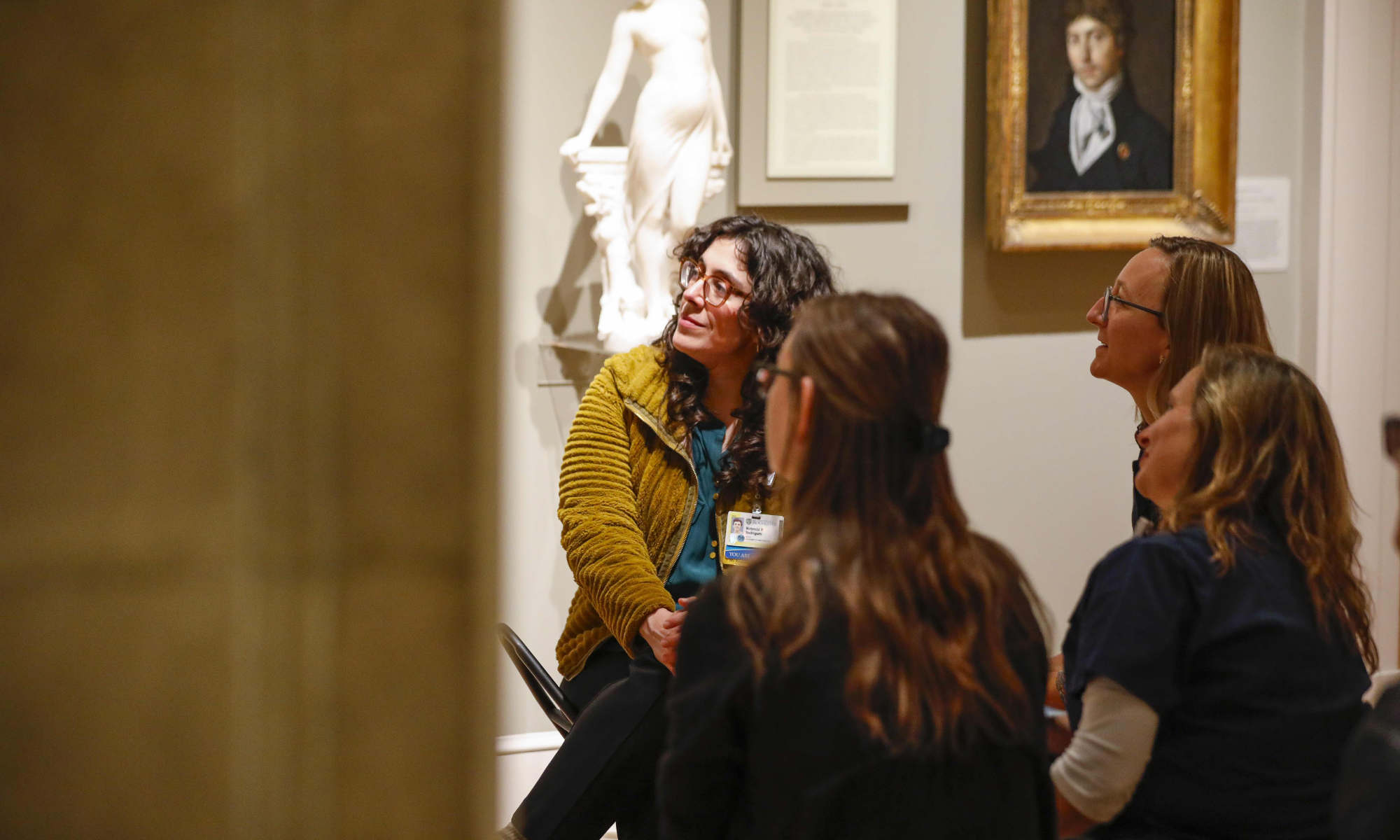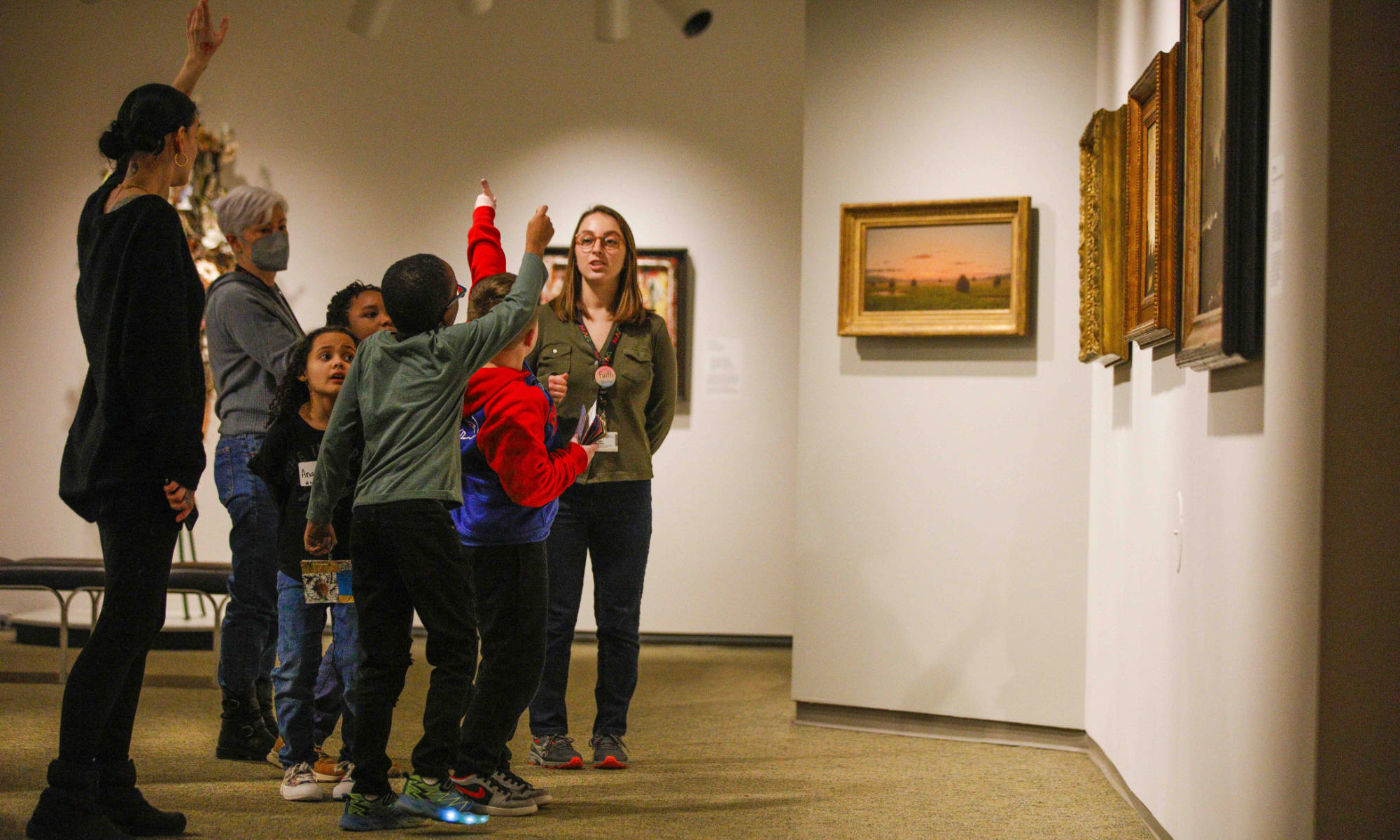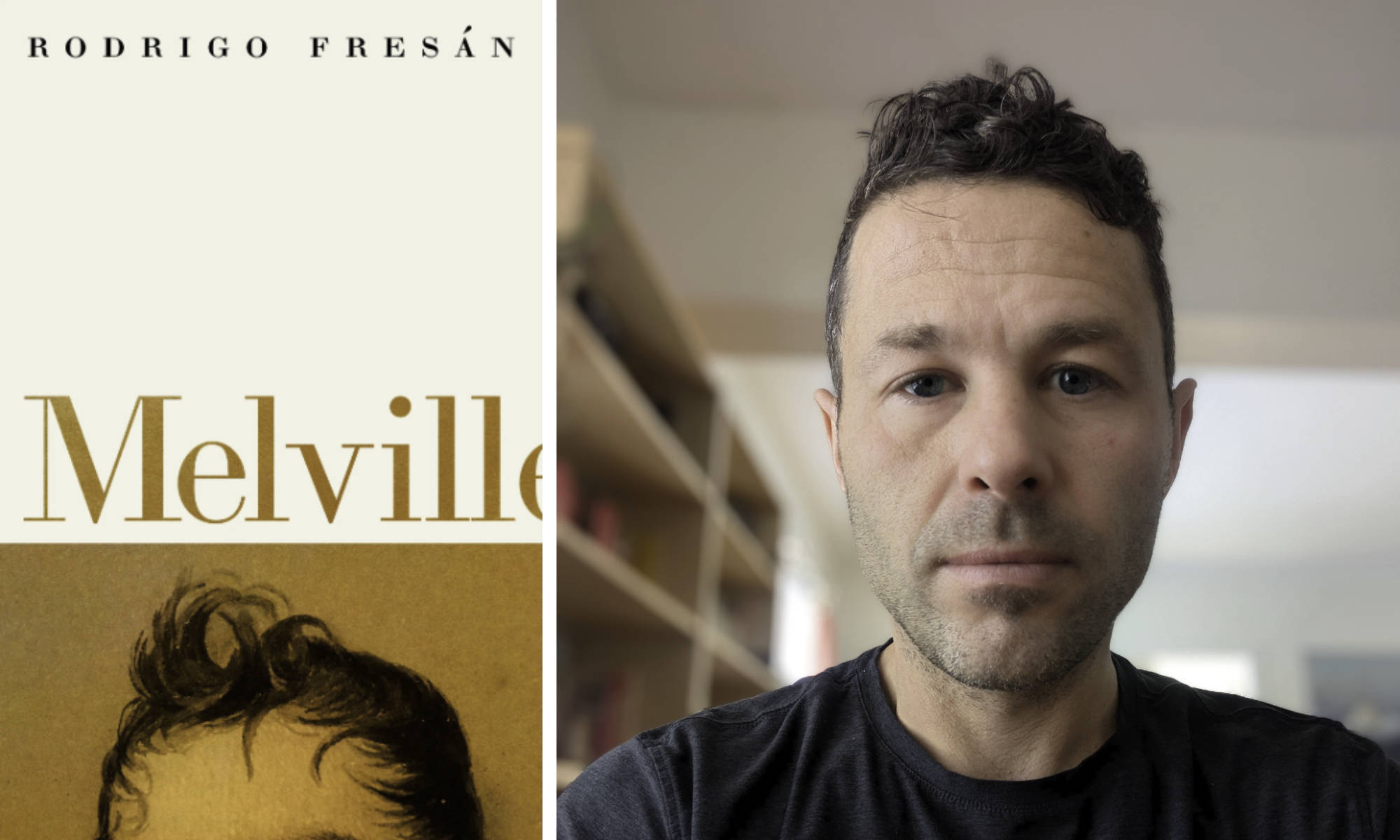by Robin L. Flanigan
Clocks ticking, trains whistling, doors creaking, ropes whipping.
Those are the gripping sounds in Isaac Julien’s visionary 10-screen film installation Lessons of the Hour—Frederick Douglass, a meditation on the life, words, and actions of the former slave, abolitionist leader, and internationally recognized statesman who made Rochester his home, his final resting place, and by his own account, the place where he accomplished his most important work.
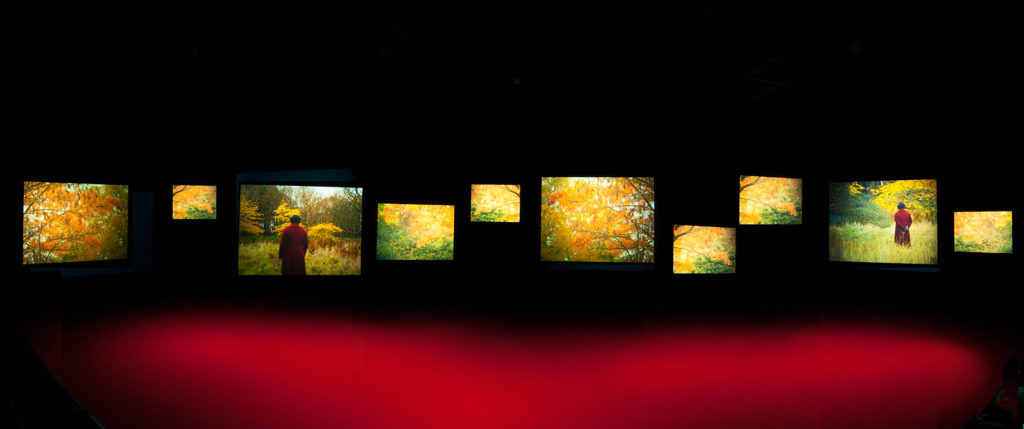
Those sounds are equally as commanding as the images—or lack thereof. There are moments each screen is blank. Sometimes one image occupies them all, sometimes multiple images play at once.
The immersive montage technique “is an aggregate form of storytelling, not a linear form of storytelling,” Julien says from his home in the United Kingdom. “I try not to treat audiences in a patronizing manner. I think they enjoy putting things together.”
Lessons of the Hour—Frederick Douglass, on view through May 12 at the University of Rochester’s Memorial Art Gallery, is the second exhibition in MAG’s “Reflections on Place” series of media art commissions informed by the history, culture, and politics of the City of Rochester, New York. The work, also recently on view at the Metro Pictures Gallery in the Chelsea neighborhood of Manhattan, will next be shown in October at the Yale Center for British Art, and in summer 2020 at the Virginia Museum of Fine Arts in Richmond.
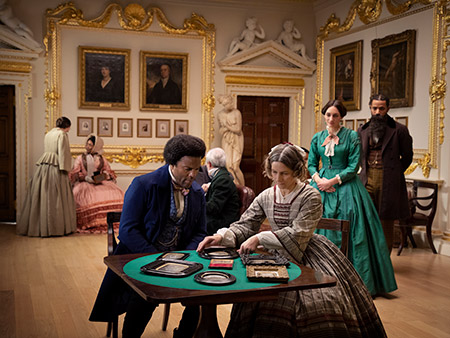
The installation is named after one of Douglass’s most important speeches, on slavery and human rights, and was created on 35mm black-and-white and color film using both analogue and digital technologies. It is a staging, according to the artist, of history seen through a contemporary lens, with actors portraying Douglass and other personalities of his time, including his wives and friend and suffragist leader Susan B. Anthony, another Rochesterian.
“There is no artist working today who makes such compelling and powerful statements about global forces shaping history and our world,” says project curator John Hanhardt, a renowned authority on the moving image.
Shown in a dark exhibition space, the panoramic Lessons of the Hour—Frederick Douglass draws on others among Douglass’s best-known speeches, including “What to the Slave is the 4th of July?” and “Lecture on Pictures.”
In one montage, Douglass addresses his audience:
It is said that the best gifts are the most abused, this among the rest. Conscience itself is misdirected: shocked by delightful sounds, beautiful colors and graceful movements—but sleeps amid the ten thousand agonies of war and slavery.
His words are followed by a low buzz, then the sound of a whip cracking, rhythmically, as one screen after another flashes—and rests—on the same scene from a cotton field.
“Certain parts need an emphasis,” explains Julien. “They are devices to direct the spectator’s attention to certain sounds or images that feel important. There’s a kind of musical notation approach to the work.”

The work was filmed in multiple settings, including in Washington, D.C., where Douglass lived late in life and where he delivered Lessons of the Hour, his final speech; in Scotland, where Douglass was an active member of the “Send Back the Money” movement and where he delivered a number of anti-slavery speeches; and in London, inside the Royal Academy period rooms, where he also delivered lectures on his struggle for equality.
“This is the first time the spirit or ethos of Frederick Douglass has been brought to life through the moving image,” says Jonathan Binstock, the Mary W. and Donald R. Clark Director of MAG. Referring to scenes of Douglass walking a black stallion through the meadows of Arthur’s Seat, an ancient volcano in Edinburgh, Binstock adds that the installation “evokes not only his life’s work, words, and actions but also his sense of self—who he dreamed of being had he not been born into the situation he was born into.”
Julien draws from paintings, historical footage, architecture, photography, performance and sound to construct poetic narratives of hybrid scenes. He came to prominence in the film world with his 1989 drama-documentary Looking for Langston, gaining a cult following with his exploration of author Langston Hughes and the Harlem Renaissance.
The work seeks to enthrall curious audiences who want to examine art in unconventional, forward-thinking ways.
“We live in a kind of multisensory experience to some extent,” says Julien. “There are screens everywhere. So how do we distinguish them? How do we communicate in an age where we’re overstimulated? All these questions are questions in my work.”
Read more
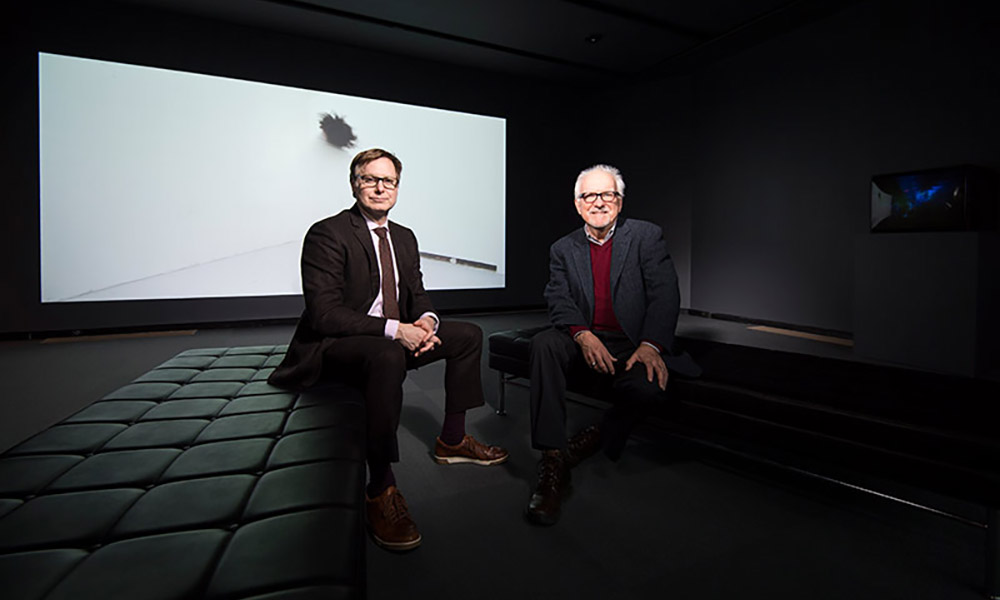
Museum launches Media Arts Watch project
Renowned curator John Hanhardt ’67 will lead an effort to build a collection featuring the aesthetics of film, video, and other technologies.
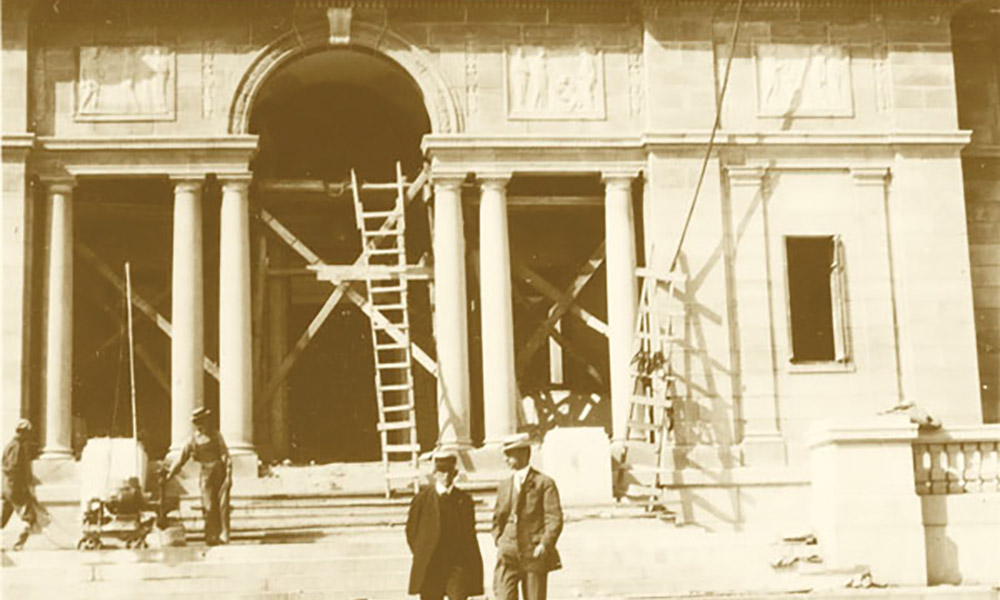
‘A great gift to the city’
Dedicated in memory of a beloved son, the Memorial Art Gallery marked its centennial celebration in October 2013 as a community landmark and resource for the arts.
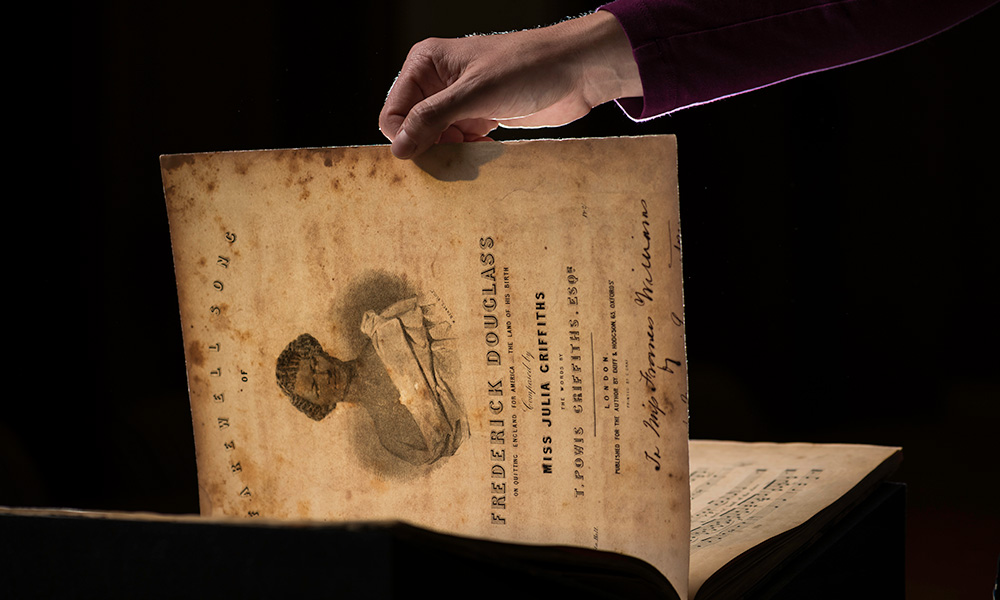
Tribute to Frederick Douglass in word and song
The sheet music of a rediscovered song honoring Frederick Douglass has a new home in River Campus Libraries, and the song was performed for the first time in a century at an event celebrating the bicentennial of his birth.

